Last updated on April 19, 2024
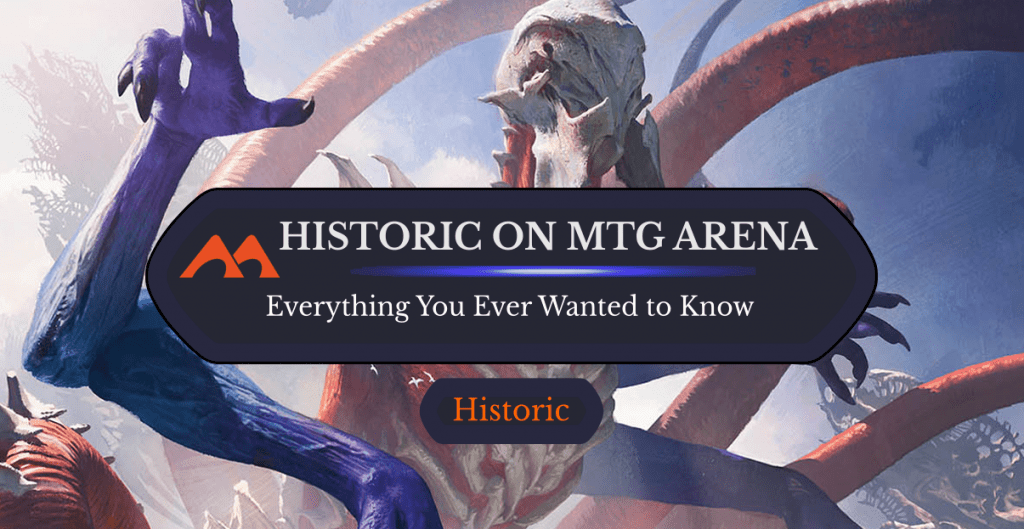
Ulamog, the Ceaseless Hunger | Illustration by Michael Komarck
Whenever WotC releases a new set, we get plenty of new and returning mechanics to mess around with. But for now, let’s take a step back and talk about old sets.
You've probably heard the Historic format being mentioned before. If you’re wondering what Historic is or where the format is going, then you’re in luck! That just so happens to be exactly what we're gearing up to talk about today.
So, sit down and buckle up while we take a ride through this old and exciting format.
What the Heck is Historic?
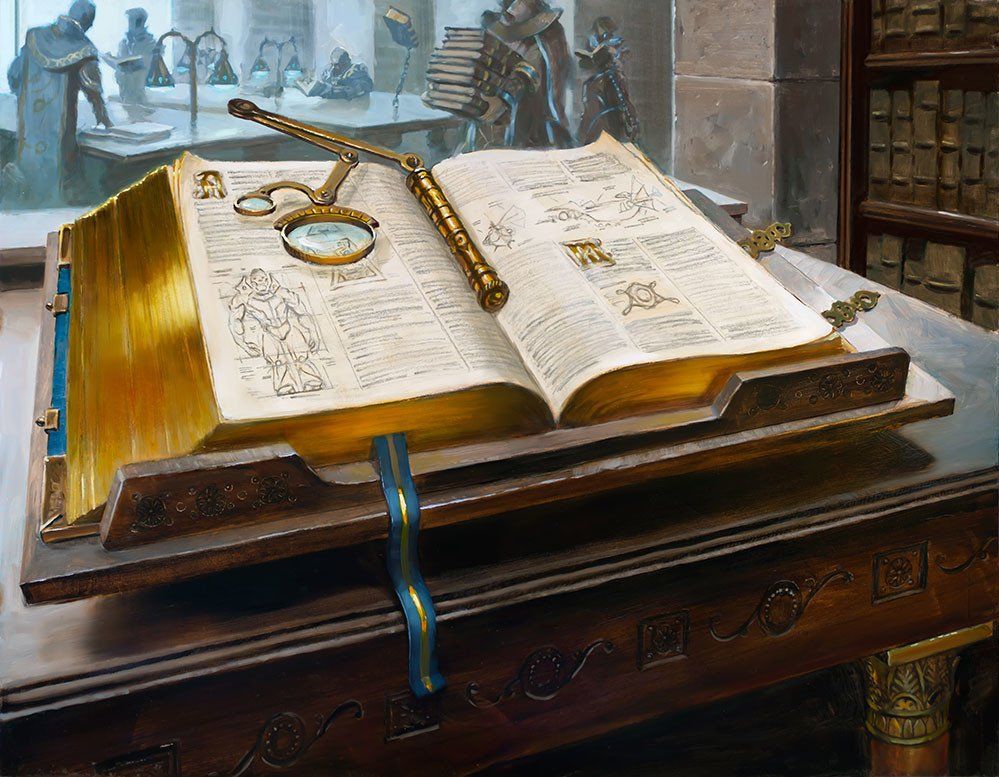
Urza's Tome | Illustration by Aaron Miller
We've talked about Standard rotation before, but here are the basics that you need to know for now: WotC releases on average four new sets every year, one per quarter (i.e., every three months), and the four oldest sets are removed from Standard play when the last set is released around September or October. But where do the older sets go? Are they exiled into nothingness?
The answer is no, they do in fact still exist. Cards from rotated sets can still be played outside of Standard, but it wasn’t that long ago that MTGA didn’t have any formats to support that. This is where the Historic format—not to be confused with historic spells from Dominaria—steps in.
Back in September 2019, Wizards announced the new MTG Arena Historic format. This format is unique to MTGA and allows players to build their decks from the older sets on the client. Originally that meant Ixalan to the most recently released set.
Since then, however, they've released a few anthologies and remastered sets that have brought back some older cards, as well as some special sets that have made their way to Arena, such as Lord of the Rings: Tales of Middle-earth. Historic has quickly become one of the most played competitive formats on Arena thanks to these inclusions.
We've also had some Alchemy cards added to the format, for better or for worse depending on your viewpoint. If you like Historic, but don't like these digital-only adaptations, Explorer/Pioneer could be a better option for you.
Playing Historic on MTG Arena
If you're itching to try out this format, then dust off your old collection and let's get right into it!
You can find the Historic queue in the “Play” menu where you can pick between the BO1 and BO3 queues, called “Historic Ranked” and “Traditional Historic Ranked” respectively. You could also play Historic decks in the unranked play queue by clicking on “Historic” in the deck selection menu before picking your deck. And then there's also Historic events that pop up every now and then.
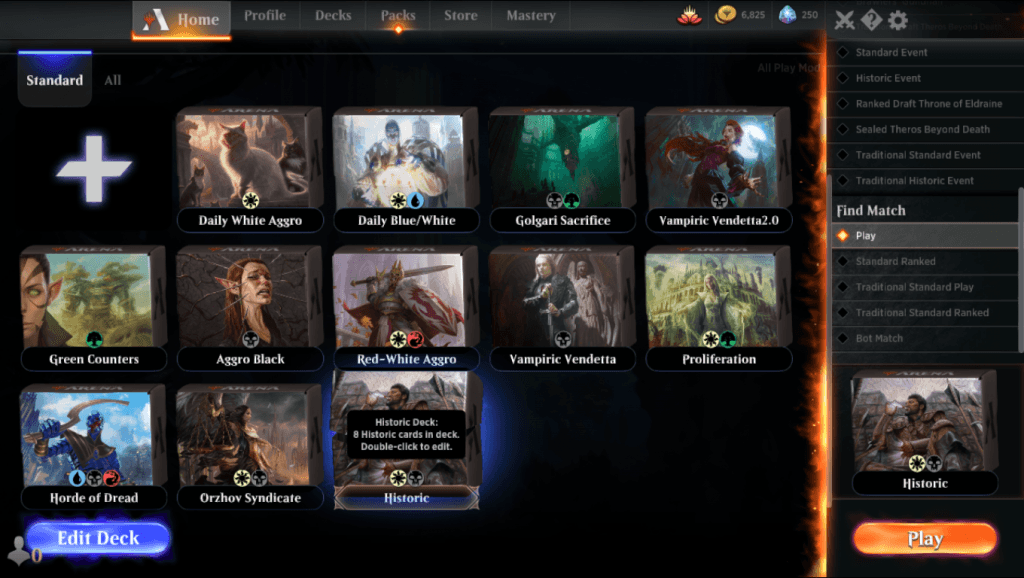
When it comes to these events, MTG Arena has two basic options for you that emulate the Standard Event and the Traditional Standard Event. Special Historic events come around every so often, one of the biggest ones being the Historic Challenge.
For the more competitive players out there, many permanent events on Arena have a maximum reward that includes Play-In points which are an early indicator that you can match up with other competitive Magic players. Be on the lookout for the occasional Arena Open. Arena Opens are hyper-competitive tournaments where you'll duel against Magic's finest players for some amazing prizes. Although 2023 only featured Limited events for Arena Opens, we may see them again in the future.
WotC launches new events every month, so keep an eye on our events calendar to stay up to date on what events are current, what's coming up, and what you've missed. If you're not familiar with any of these, here are the details:
| Title | Entry Fee | Max Wins / Losses | Max Rewards | Match Structure |
|---|---|---|---|---|
| Historic Event | 2,500 gold or 375 gems | 7 / 3 | 500 gems, 3 packs, and 1 Play-In Point | BO1 |
| Traditional Historic Event | 5,000 gold or 750 gems | 5 Matches, regardless of record | 1,000 gems, 3 packs, and 4 Play-In Points | BO3 |
| Historic Ranked | N/A | Unlimited | N/A | BO1 |
| Traditional Historic Ranked | N/A | Unlimited | N/A | BO3 |
The Making of Historic Decks (A Step-by-Step Guide)
Before we move on to some of the most popular and most successful decks of the format, let's take a look at the actual mechanics of making a Historic deck in MTG Arena. It's fairly simple: All you have to do is select either “Historic” or “Traditional Historic” when selecting the format for a new deck, and then you can either filter by specific sets or just select your little heart away.
If you're not familiar with MTGA's UI and need a bit more guidance, fear not! We've got your covered:
1. Open your “Decks” tab and then click on the white plus icon to start a new deck.

2. Select either “Historic” or “Traditional Historic” from the format drop-down menu.
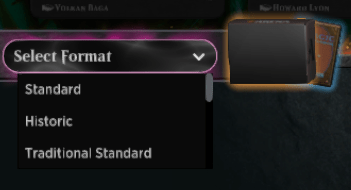
3. Select the cards that you'd like to add to your deck (if you need to use wildcards, check out this tutorial on how to do that).
- You can either use the search bar on the top right to find specific cards or the advanced filters to sort by card type, cost, rarity, set, color, and if you've collected them.

- Quick note: Suspended cards will be faded and have a red tint to them. When you hover over them, a big “Not Legal” notice will show up, and when you try to finish a deck with suspended cards you'll get this message:
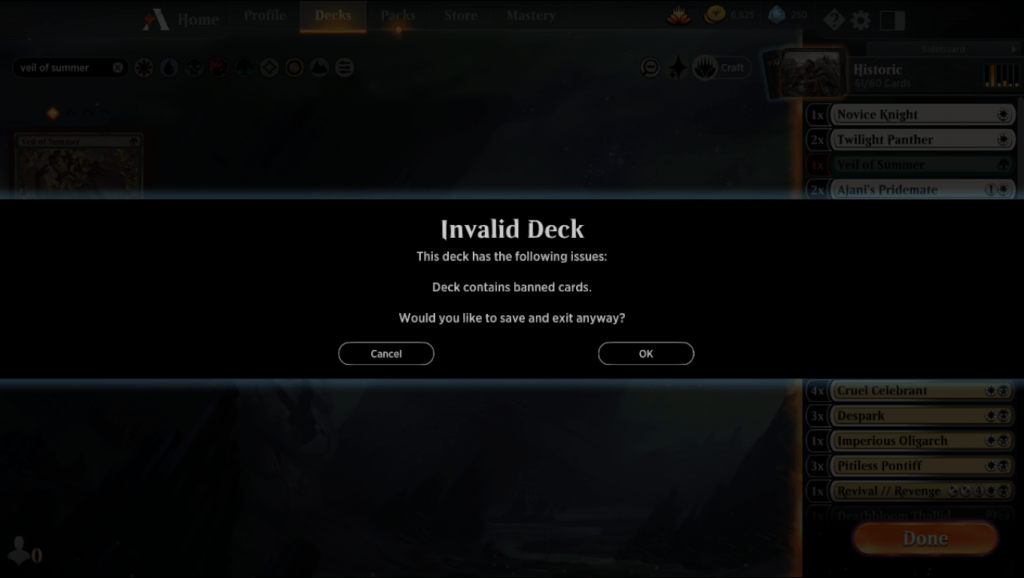
4. If you're planning on playing Traditional Historic, open the “Sideboard” tab and then repeat the steps for adding cards here.
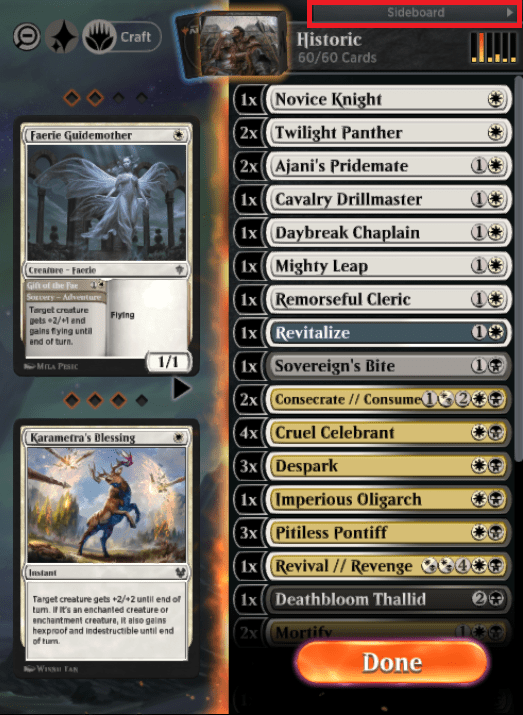
5. Return to the Deck tab to return to the main deck and then click “Done.”
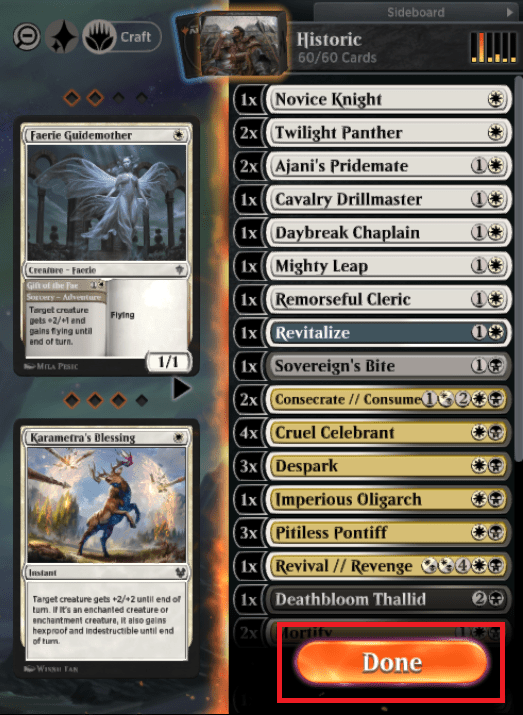
And that's it! Congratulations, you've now got your very own Historic deck. If you're looking for inspiration for new decks or just aren't sure what you want yet, take a look at some of the most popular options below.
(Wild)cards, Suspensions, and Sets, Oh My!
If you’re a newer player who hasn't been on Arena for a long time, then you probably don’t have a lot of cards from older sets. This means that getting cards from any of those older sets is limited to special events, opening packs from the set, or getting the cards individually with wildcards.
Getting a complete Historic deck can be somewhat of a challenge since there are so many older sets out there. It would cost you a fortune to buy enough packs of every set to build a deck that can also win you games. On top of that, some Historic-only additions have come out that aren't available for purchase anymore. So what's the easiest way to get those cards?
Wildcard Crafting
Initially, the crafting cost for Historic cards was going to be 2:1 but, as I’m sure you would expect, the player base was beyond not happy with this announcement. Developers said that they wanted to “find a balance for the long-term health of MTG Arena,” but they eventually reverted back to the normal 1:1 cost.
“New” Historic Cards
In November 2019, WotC launched the Historic Anthology event and released 20 “new” cards for the format with it. The Anthology was available for purchase in Arena's store for a short time for gold or gems. This event and the new cards were introduced as a way to spice up Historic deck building and encourage players to play the new format.
When Wizards originally announced their intention to release “new” cards for Historic, they mentioned having a goal to release cards each quarter after the first one in November 2019, but they were a little bit behind on that. Instead, we got something even better: Jumpstart and two remastered sets, Kaladesh and Amonkhet. These brought back a ton of favorites from older sets plus a plethora of new competitive cards.
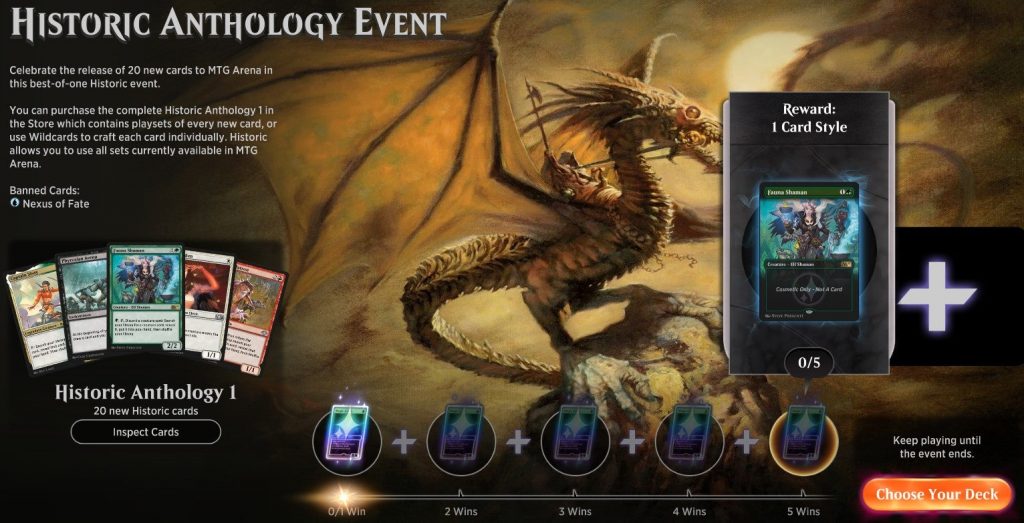
Historic Anthology 1
The Historic Anthology 1 bundle was fairly expensive at 3,400 gems, but you could also use wildcards to craft the ones you wanted instead. The bundle contained a play set (i.e., four copies) of these cards:
(80)
Soul Warden x4
Distant Melody x4
Treasure Hunt x4
Tendrils of Corruption x4
Goblin Matron x4
Kiln Fiend x4
Elvish Visionary x4
Mind Stone x4
Ornithopter x4
Burning-Tree Emissary x4
Kinsbaile Cavalier x4
Hypnotic Specter x4
Imperious Perfect x4
Cryptbreaker x4
Fauna Shaman x4
Darksteel Reactor x4
Captain Sisay x4
Phyrexian Arena x4
Hidetsugu's Second Rite x4
Serra Ascendant x4
Historic Anthology 2
Next up, the Historic Anthology 2 was released on February 28, 2020 with 25 new Historic cards to play with. The bundle cost either 4,000 gems or 25,000 gold (ouch) and contained four copies of these cards:
(100)
Ancestral Mask x4
Barren Moor x4
Bojuka Bog x4
Brain Maggot x4
Dragonmaster Outcast x4
Forgotten Cave x4
Ghost Quarter x4
Goblin Ruinblaster x4
Inexorable Tide x4
Knight of the Reliquary x4
Lonely Sandbar x4
Maelstrom Pulse x4
Meddling Mage x4
Merrow Reejerey x4
Nyx-Fleece Ram x4
Pack Rat x4
Platinum Angel x4
Ranger of Eos x4
Secluded Steppe x4
Sigil of the Empty Throne x4
Terravore x4
Thalia, Guardian of Thraben x4
Tranquil Thicket x4
Virulent Plague x4
Waste Not x4
Historic Anthology 3
Then we've got the Historic Anthology 3, which introduced 27 cards for Historic with four copies of each, as usual. It would've set you back 25,000 gold or 4,000 gems if you wanted to add these to your collection from the store. Take a look at what you got:
(108)
Akroma's Memorial x4
Ancient Ziggurat x4
Body Double x4
Chainer's Edict x4
Devil's Play x4
Enchantress's Presence x4
Gempalm Incinerator x4
Gempalm Polluter x4
Honden of Cleansing Fire x4
Honden of Infinite Rage x4
Honden of Life's Web x4
Honden of Night's Reach x4
Honden of Seeing Winds x4
Krosan Tusker x4
Maze's End x4
Mirari's Wake x4
Momentary Blink x4
Phyrexian Obliterator x4
Ratchet Bomb x4
Roar of the Wurm x4
Silent Departure x4
Swan Song x4
Tectonic Reformation x4
Tempered Steel x4
Timely Reinforcements x4
Ulamog, the Ceaseless Hunger x4
Unburial Rites x4
Historic Anthology 4
Next there's the Historic Anthology 4. This playset introduced 25 new cards for Historic on Arena. It would set you back the same amount as the previous anthology, 25,000 gold or 4,000 gems, and of course came with the typical four copies of each card. These were released to the digital platform on March 11 and included:
(100)
Abomination of Llanowar x4
Adorned Pouncer x4
Ammit Eternal x4
Blinkmoth Nexus x4
Bonesplitter x4
Coldsteel Heart x4
Collected Conjuring x4
Death's Shadow x4
Declaration in Stone x4
Faith of the Devoted x4
Flameblade Adept x4
Goblin Gaveleer x4
Hamza, Guardian of Arashin x4
Harmless Offering x4
Iceberg Cancrix x4
Inspiring Statuary x4
Lys Alana Huntmaster x4
Marit Lage's Slumber x4
Sawtusk Demolisher x4
Spider Spawning x4
Sword of Body and Mind x4
Think Twice x4
Thraben Inspector x4
Torment of Scarabs x4
Triumphant Reckoning x4
Historic Anthology 5
There wasn't anything new or ground-breaking with Historic Anthology 5: four copies each of 25 new Historic cards that’ll set you back 25,000 gold or 4,000 gems. This set arrived May 27 with the following additions:
(100)
Ancient Grudge x4
Atarka's Command x4
Court Homunculus x4
Dragonstorm x4
Dromoka's Command x4
Elesh Norn, Grand Cenobite x4
Grisly Salvage x4
Ichor Wellspring x4
Intangible Virtue x4
Into the North x4
Jin-Gitaxias, Core Augur x4
Kolaghan's Command x4
Merfolk Looter x4
Ojutai's Command x4
Ray of Revelation x4
Relic of Progenitus x4
Reverse Engineer x4
Sheoldred, Whispering One x4
Silumgar's Command x4
Stifle x4
Trash for Treasure x4
Urabrask the Hidden x4
Vault Skirge x4
Vorinclex, Voice of Hunger x4
Whirler Rogue x4
Historic Anthology 6
Historic Anthology 6, available in July of 2022, was split between the Modern Horizons 2 artifact Bridges and a number of one-off cards for various formats, like Go-Shintai of Life's Origin for Brawl or the classic Tarmogoyf in its first appearance on Arena. 4,000 gems/25,000 gold was the standard going rate for anthologies at this point, this one including:
(80)
Avacyn, Angel of Hope x4
Phyrexian Metamorph x4
Night of Souls' Betrayal x4
Ophiomancer x4
Laelia, the Blade Reforged x4
Go-Shintai of Life's Origin x4
Tarmogoyf x4
Glimpse the Unthinkable x4
Chalice of the Void x4
Retrofitter Foundry x4
Darkmoss Bridge x4
Goldmire Bridge x4
Drossforge Bridge x4
Mistvault Bridge x4
Razortide Bridge x4
Rustvale Bridge x4
Silverbluff Bridge x4
Slagwoods Bridge x4
Tanglepool Bridge x4
Thornglint Bridge x4
Historic Anthology 7
Historic Anthology 7 brought with it a bunch of classic cards and looked like pure gold compared to the Explorer Anthology 3 that released alongside it in July 2023. For the same going rate of 4,000 gems or 25,000 coins you'd get:
(92)
Repeal x4
Vendilion Clique x4
Frost Titan x4
Unearth x4
Bloodghast x4
Echoing Decay x4
Grave Titan x4
Tribal Flames x4
Inferno Titan x4
Wild Nacatyl x4
Acidic Slime x4
Primeval Titan x4
Tooth and Nail x4
Bloodbraid Elf x4
Wayfarer's Bauble x4
Mortarpod x4
Sword of Fire and Ice x4
Worn Powerstone x4
Silent Clearing x4
Fiery Islet x4
Nurturing Peatland x4
Sunbaked Canyon x4
Waterlogged Grove x4
Alchemy
We need to address the big elephant in the room: Alchemy.
Alchemy was created to give a new twist on playing Magic, available exclusively through the MTGA client. It's a game mode with two kinds of cards.
- Digital-Only Cards: These cards are only available in MTGA and are exclusive to the Alchemy, Timeless, and Historic formats.
- Rebalanced Cards: These are versions of cards that already exist and were either buffed or nerfed depending on how underwhelming or dominant they were respectively. If you already owned a copy of a rebalanced card in its original state then you automatically get a copy of it in its Alchemy form.
A handful of new mechanics were also introduced, including: spellbook, seek, conjure, and perpetually, later expanded to include intensity, boons, double team and specialize. You can find more details about these mechanics in our ranked article for Alchemy mechanics.
This has caused a lot of controversy regarding the economy, as there are very few ways to get a hold of Alchemy cards outside of just crafting them. But, to be fair, only a handful of them even see competitive play anyway. They have recently started adding Alchemy cards to existing draft formats for about a week at a time, though it's a very temporary solution for card acquisition.
Banned and Suspended Cards
While other formats have ban lists for cards that can’t be used, Historic has that plus “suspended” cards. Long story short, cards that land on Historic’s suspended list are temporarily banned and may be unsuspended in the future. You also won't get wildcard refunds for suspended cards like you do with banned cards.
Even banned cards get unbanned sometimes, though, so it seems like this is just to avoid prematurely giving out wildcards. If you want the long story, check out WotC’s announcement on this.
For the full list of banned cards, check out our article on the subject.
Rebalanced Cards
With Jumpstart and Alchemy, Magic has digital-only cards that allow its game developers to try new mechanics and ideas that might not be possible in paper formats. One such benefit is the ability to patch cards rather than ban them from play altogether.
Obviously you can't errata the text on all paper cards at will, but it's as easy as changing a little bit of code with digital-only cards. Okay, not easy, but still possible.
Alchemy is Magic's rotating format for MTG Arena that also includes rebalanced cards. It's worth noting that any cards that are rebalanced in Alchemy are also rebalanced for Historic. This makes quite a bit of sense, as having a single card do three different things across three formats would be confusing! But sometimes, when a card rotates out of Standard (and therefore Alchemy), it reverts to its non-rebalanced version in Historic. This happened with Luminarch Aspirant as well as some other cards from the same era of Standard.
Historic, Decks, and You
Historic has become a self-balancing competitive format thanks to all the answers available in the newly released sets and anthologies. Whether you're a new player looking to build your first Historic deck or a more experienced player gearing up to use an old favorite, read on for some insight into the current meta in this format!
When it comes to deck building, usually you've got to look at the bigger picture. What kind of decks are performing well in the format? What deck types are popular at the moment? What's the most powerful strategy with the available cards?
There are some popular and successful decks floating around as you'll see in a minute. The format is flexible and there are plenty of decks that are extremely strong and capable of carrying you into the top 1200 of Mythic, even if they're not tier 1. We'd be here forever if we went through every one of them, so instead let's focus on the best performers.
Izzet Wizards
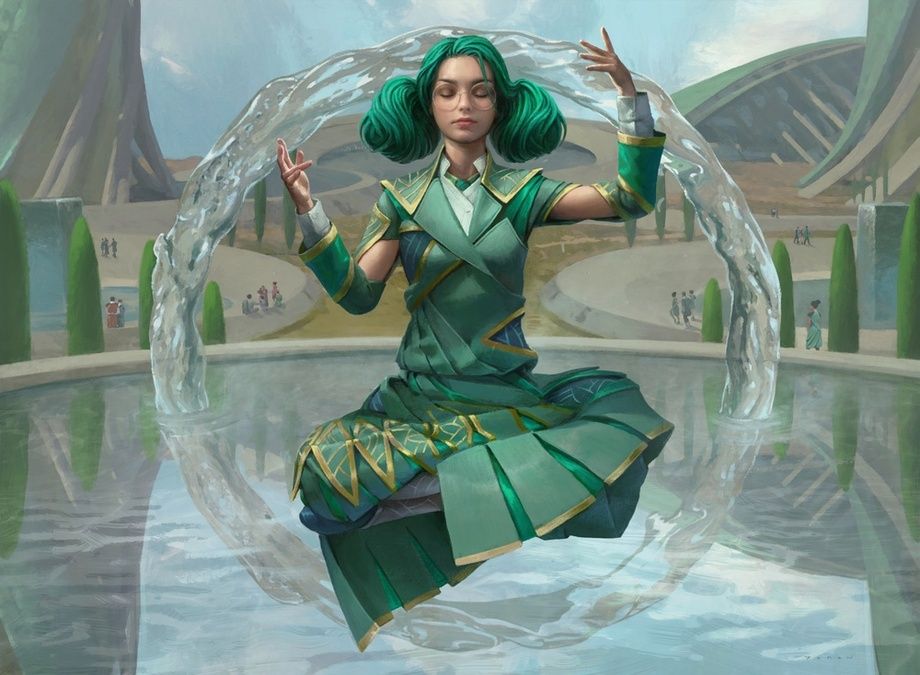
Symmetry Sage | Illustration by Jehan Choo
Companion (1)
Creatures (15)
Soul-Scar Mage x4
Symmetry Sage x4
Dreadhorde Arcanist x4
Balmor, Battlemage Captain x3
Instants (13)
Spikefield Hazard
Play with Fire x4
Consider x4
Wizard's Lightning x4
Sorceries (13)
Reckless Charge x4
Expressive Iteration x4
Static Discharge x4
Mentor's Guidance
Lands (19)
Mountain
Shivan Reef x2
Spirebluff Canal x4
Riverglide Pathway x3
Den of the Bugbear x3
Steam Vents x4
Otawara, Soaring City
Sokenzan, Crucible of Defiance
Sideboard (1)
Seen by many to be the deck you need to be able to beat in the format, Izzet () wizards makes good use of prowess-style creatures and cheap spells to send some damage right at your opponent in no time flat.
Rebalanced versions of Symmetry Sage and Mentor's Guidance go along with Static Discharge to give a bit of a unique spin on the traditional prowess deck that sometimes shows up in other formats.
Mono-Green Elves
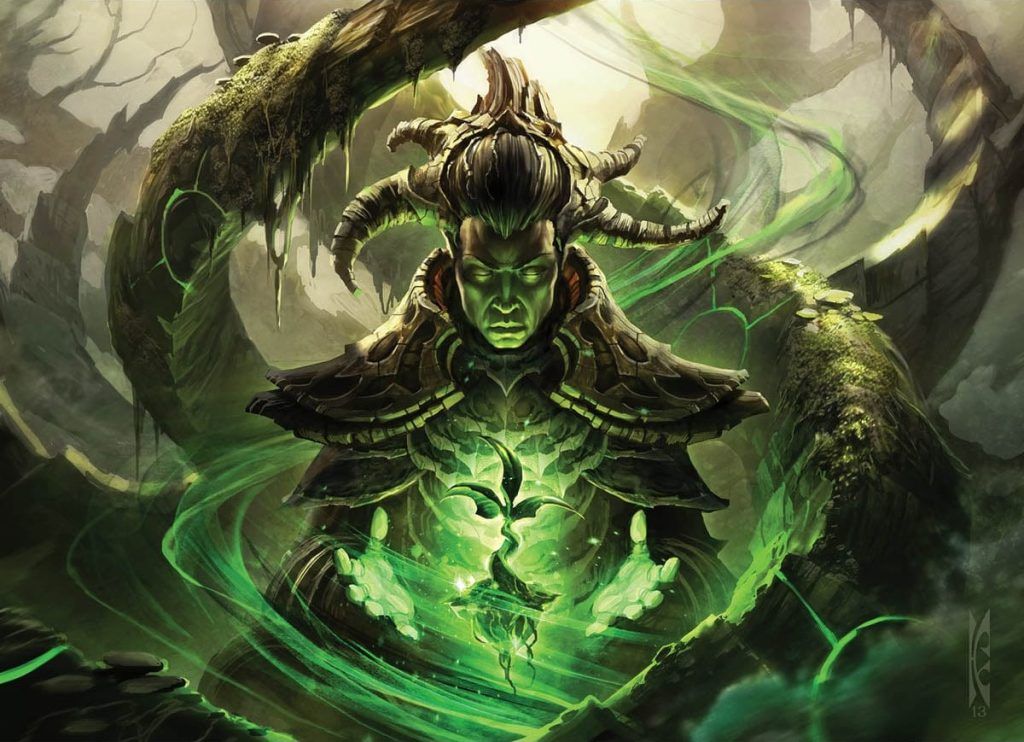
Elvish Archdruid | Illustration by Raymond Swanland
Planeswalkers (4)
Creatures (31)
Llanowar Elves x4
Elvish Mystic x4
Jaspera Sentinel x3
Allosaurus Shepherd x4
Leaf-Crowned Visionary x4
Elvish Warmaster x4
Elvish Archdruid x4
Circle of Dreams Druid x4
Instants (4)
Lands (21)
Forest x16
Castle Garenbrig x4
Boseiju, Who Endures
Sideboard (7)
Haywire Mite
Wurmcoil Engine
Tormod's Crypt
Liquimetal Coating
Staff of Domination
Transmogrifying Wand
Aetherflux Reservoir
Any format with a deep enough card pool is likely to be able to support a decent elves deck, and Historic is no different. Some of the more powerful pieces here are Allosaurus Shepherd and Elvish Archdruid, but these decks usually also run Karn, the Great Creator with a Karnboard of artifacts in the side.
Notably, there aren't often a lot of digital-only cards in the elves lists, making it a fairly true-to-paper experience.
Mono-Red Aggro
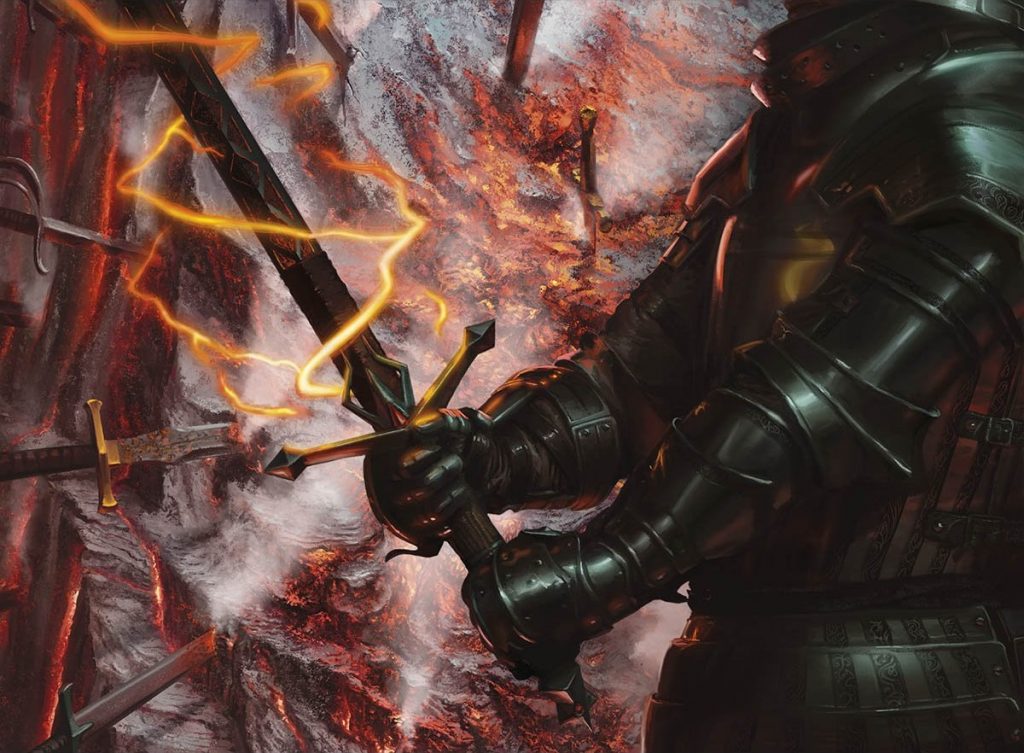
Embercleave | Illustration by Joe Slucher
Planeswalkers (2)
Creatures (25)
Fanatical Firebrand x4
Foundry Street Denizen x4
Burning-Tree Emissary x4
Viashino Pyromancer x4
Kari Zev, Skyship Raider
Bonecrusher Giant x3
Anax, Hardened in the Forge x4
Hazoret the Fervent
Instants (6)
Spikefield Hazard x2
Lightning Strike x4
Enchantments (4)
Artifacts (3)
Embercleave x3
Lands (20)
Mountain x14
Den of the Bugbear x2
Ramunap Ruins x4
Sideboard (15)
Pithing Needle x2
Unlicensed Hearse x2
Abrade x3
Fry x4
Fable of the Mirror-Breaker x2
Brotherhood's End x2
If Red Deck Wins isn’t an archetype in your format, are you even playing Constructed Magic? Mono-red aggro has your typical fare of staples from recent sets like Kumano Faces Kakkazan and Den of the Bugbear, but unusually runs 24 lands (probably because of the creature lands providing good mana sinks).
A few cards are definitely included to counter rival decks, like Roiling Vortex to provide a nuisance to some of the unfair strategies, the ever-present threat of lifegain decks, and Rampaging Ferocidon for the creature-spam decks.
Selesnya Lifegain Combo
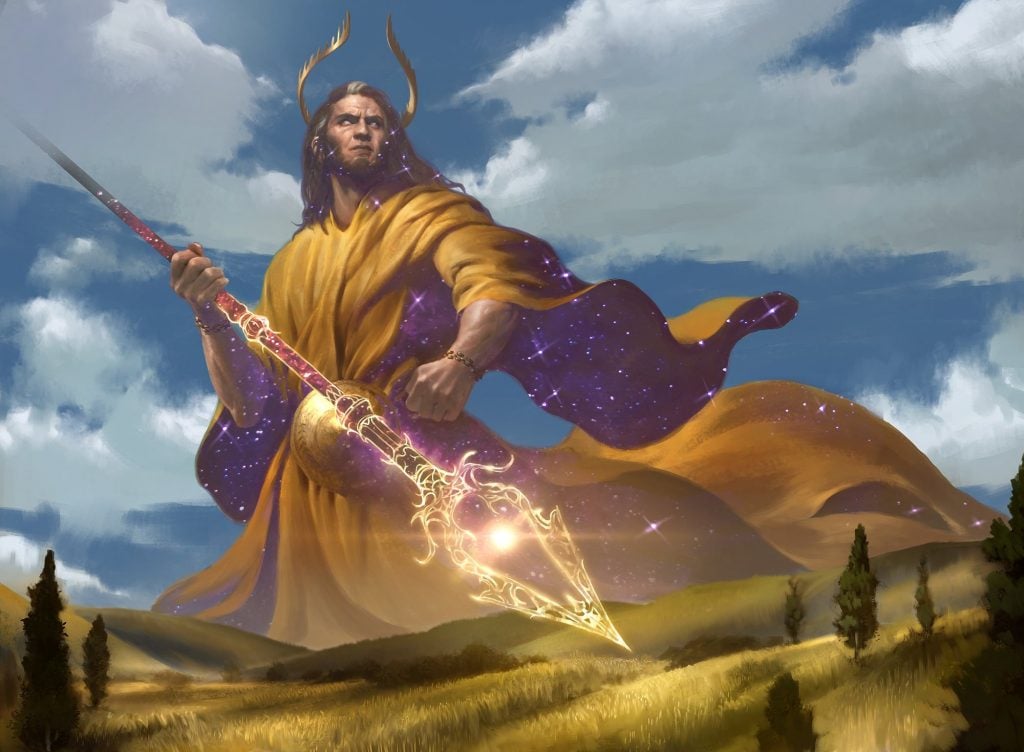
Heliod, Sun-Crowned | Illustration by Lius Lasahido
Planeswalker (1)
Creatures (27)
Soul Warden x4
Lunarch Veteran x4
Voice of the Blessed x4
Trelasarra, Moon Dancer x4
Skyclave Apparition x3
Scurry Oak x4
Heliod, Sun-Crowned x4
Instants (4)
Enchantments (4)
Lands (24)
Plains x8
Sunpetal Grove x4
Castle Ardenvale x2
Branchloft Pathway x4
Temple Garden x4
Eiganjo, Seat of the Empire
Boseiju, Who Endures
Lifegain decks are very much loved on Arena, but Historic steps away from the aggro/midrange lifegain beats plan you see in other formats, introducing an element of combo to the mix. The inclusion of Scurry Oak with Heliod, Sun-Crowned allows you to go wide as well as tall, with a basically infinite number of squirrel tokens and life. The counter from Heliod goes on Scurry Oak, which makes a creature, which makes a life, which triggers Heliod, etc.
Collected Company can also make this combo appear out of nowhere, making it something you definitely need to be aware of if playing the format.
Azorius Affinity
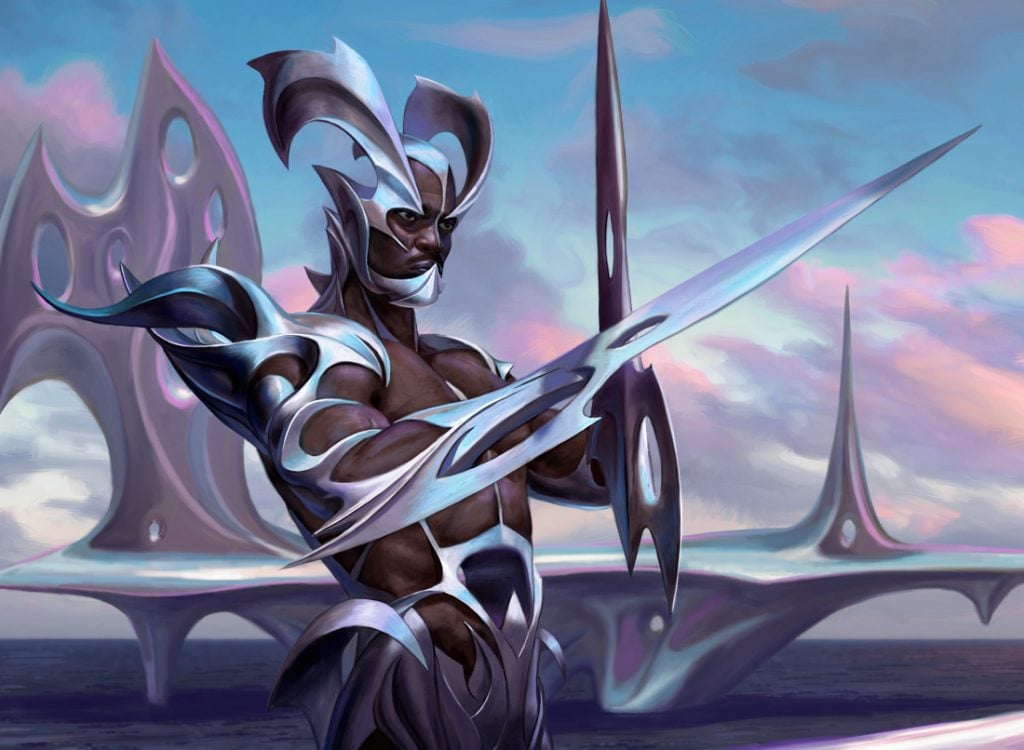
Esper Sentinel | Illustration by Eric Deschamps
Creatures (15)
Ornithopter x3
Esper Sentinel x4
Ingenious Smith x4
Thought Monitor x4
Instants (4)
Artifacts (19)
Retrofitter Foundry x4
Soul-Guide Lantern x2
Portable Hole x4
Moonsnare Prototype x4
Shadowspear
Nettlecyst x4
Lands (22)
Darksteel Citadel x4
Razortide Bridge x2
Plains
Spire of Industry x4
Hengegate Pathway x4
Deserted Beach x2
Hallowed Fountain x4
Otawara, Soaring City
Basically an affinity aggro deck, versions of Azorius () affinity have been popular since the early days of Historic. More recent versions make good use of cards like Esper Sentinel and Thought Monitor, as well as the super-powerful Retrofitter Foundry.
But this isn’t just a straight-up aggro deck. It has a good amount of interaction as well from cards like Portable Hole and Metallic Rebuke. While it's definitely an aggro deck, it also has the tools to hold out to the mid-to-late game when needed.
Izzet Belcher Combo
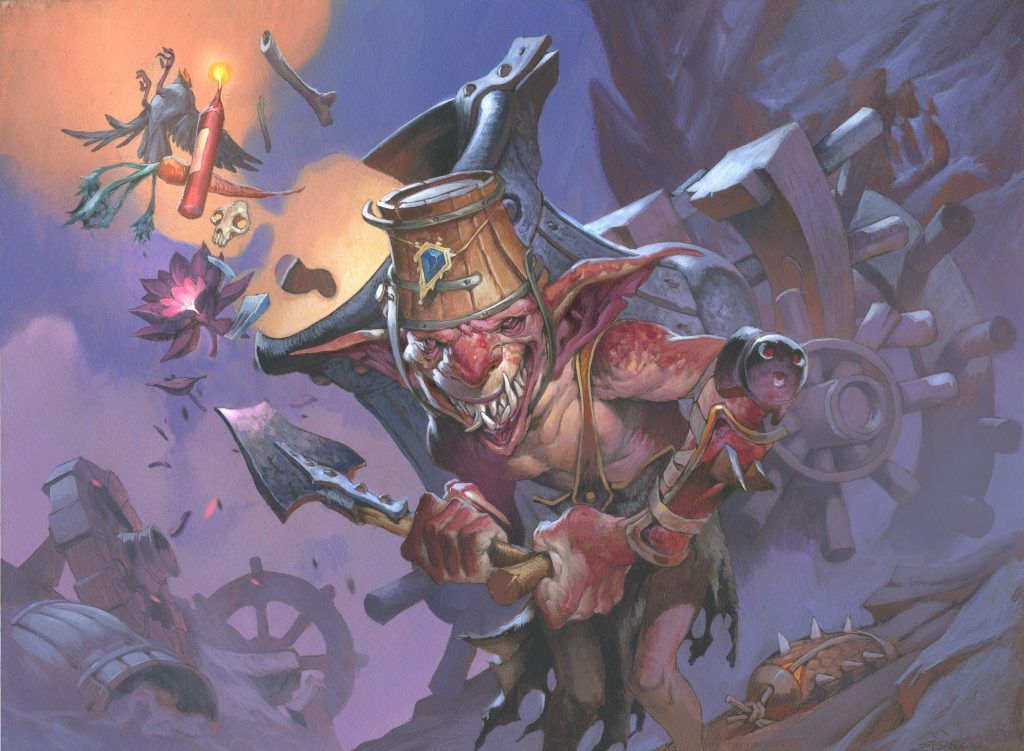
Goblin Charbelcher | Illustration by Jesper Ejsing
Instants (32)
Pact of Negation x4
Spikefield Hazard x4
March of Reckless Joy x4
An Offer You Can't Refuse x4
Jwari Disruption x4
Valakut Awakening x4
Prismari Command x4
Magma Opus x4
Sorceries (24)
Strike It Rich x4
Shatterskull Smashing x4
Indomitable Creativity x4
Irencrag Feat x4
Song-Mad Treachery x4
Sea Gate Restoration x4
Artifacts (4)
The Brothers' War brought a bunch of classic artifacts to the format, and one of the more popular additions has been Goblin Charbelcher. Running zero lands (at least on the front face so Belcher won’t “see” them), the aim of the game here is to get mana from the Zendikar Rising MDFC lands like Spikefield Hazard and Treasure spells like Strike It Rich, and then use Irencrag Feat to get enough mana to cast and activate Belcher in the same turn.
Go through your deck and blast your opponent for 40+ damage when you don’t find a land in the rest of your deck. EZ.
Azorius Auras
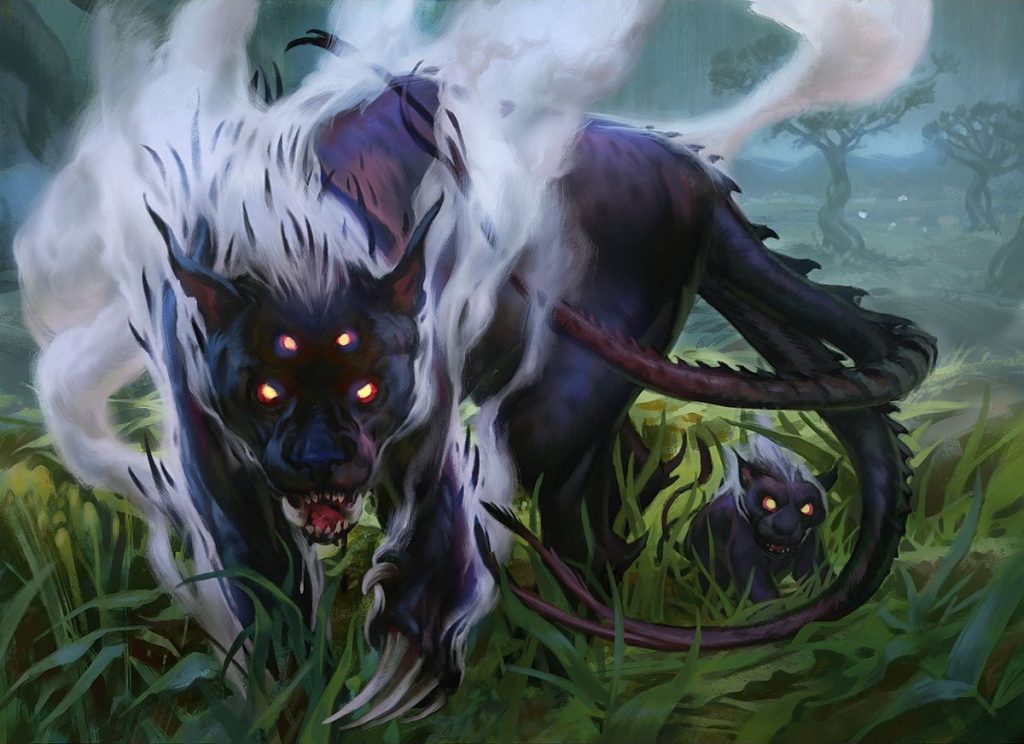
Lurrus of the Dream-Den | Illustration by Slawomir Maniak
Companion (1)
Creatures (21)
Esper Sentinel x4
Selfless Savior x4
Stormchaser Drake x3
Hushbringer x2
Kor Spiritdancer x4
Sram, Senior Edificer x4
Enchantments (17)
Curious Obsession x3
Arcane Flight x3
Sentinel's Eyes x4
Cartouche of Solidarity x4
Staggering Insight x2
Aether Tunnel
Lands (22)
Island x3
Plains x7
Glacial Fortress x4
Hengegate Pathway x4
Hallowed Fountain x4
Sideboard (15)
Cerulean Drake
Hushbringer x4
Lurrus of the Dream-Den
Spell Pierce
Portable Hole x3
Unlicensed Hearse x2
Heliod's Punishment x3
Historic is pretty much the only place you can still play Lurrus of the Dream-Den, and Azorius auras is an ideal home for it. You can get in a lot of damage and draw a ton of cards in no time at all combining some great scalable creatures like Kor Spiritdancer and Stormchaser Drake with powerful auras like Curious Obsession.
This version doesn’t run much protection for your creatures outside of Selfless Savior, but clearly it’s not really needed in this deck with a definite plan.
Mardu Greasefang
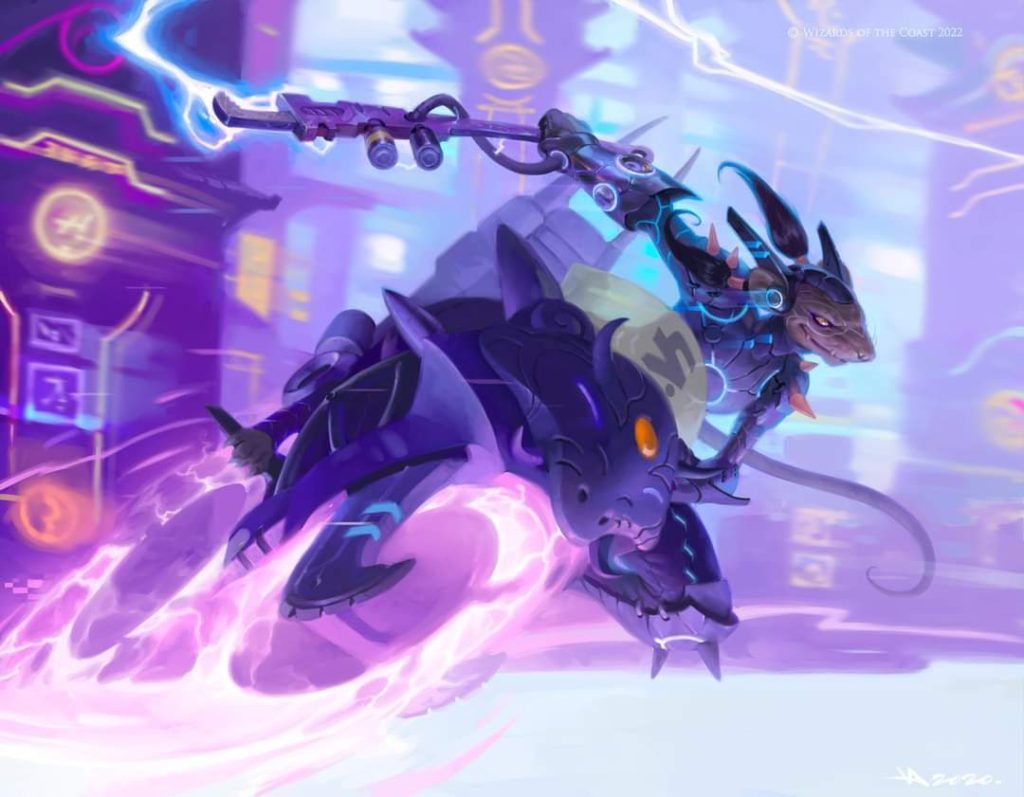
Greasefang, Okiba Boss | Illustration by Victor Adame Minguez
Creatures (25)
Insolent Neonate x4
Voldaren Epicure x4
Goblin Engineer x4
Priest of Fell Rites x4
Greasefang, Okiba Boss x4
Platinum Angel
Serra's Emissary x4
Sorceries (11)
Faithless Salvaging x3
Faithless Looting x4
Unburial Rites x4
Artifacts (4)
Parhelion II x4
Lands (20)
Concealed Courtyard x2
Inspiring Vantage x4
Blightstep Pathway x2
Sacred Foundry x4
Godless Shrine x4
Blood Crypt x4
Greasefang, Okiba Boss is one of the biggest archetype-creating cards to come out in recent years, and Historic is one of the many places it’s found a home. Of course running Parhellion II, this also runs a more traditional reanimation package with cards like Serra's Emissary and Unburial Rights.
Just pray your opponent isn’t running graveyard hate!
Azorius Control

March of Otherworldly Light | Illustration by Nils Hamm
Planeswalkers (6)
The Wandering Emperor x3
Teferi, Hero of Dominaria x3
Creatures (5)
Lyra Dawnbringer
Calim, Djinn Emperor x4
Instants (16)
Fragment Reality x4
Seek New Knowledge x4
Archmage's Charm x4
Divine Purge x4
Enchantments (6)
Shark Typhoon x2
Leyline Binding x4
Lands (27)
Island
Glacial Fortress x4
Deserted Beach x4
Hall of Storm Giants
Breeding Pool x2
Spara's Headquarters x2
Steam Vents x2
Raugrin Triome x2
Watery Grave x2
Hallowed Fountain x4
Raffine's Tower x2
Otawara, Soaring City
Not quite the powerhouse it once was, there are still some great additions from recent sets like March of Otherworldly Light to deal with single targets, Divine Purge as one of the most effective board wipes in the format, and tons of other cards to outvalue your opponents. It even has access to Archmage's Charm from Modern Horizons now.
The plan is to control the game in the early stages and seal the deal with your planeswalkers. Teferi, Hero of Dominaria and The Wandering Emperor are the most commonly used, and they can single-handedly turn other decks off and take over games.
If you like control and blue mana, this is your deck.
Rakdos Midrange
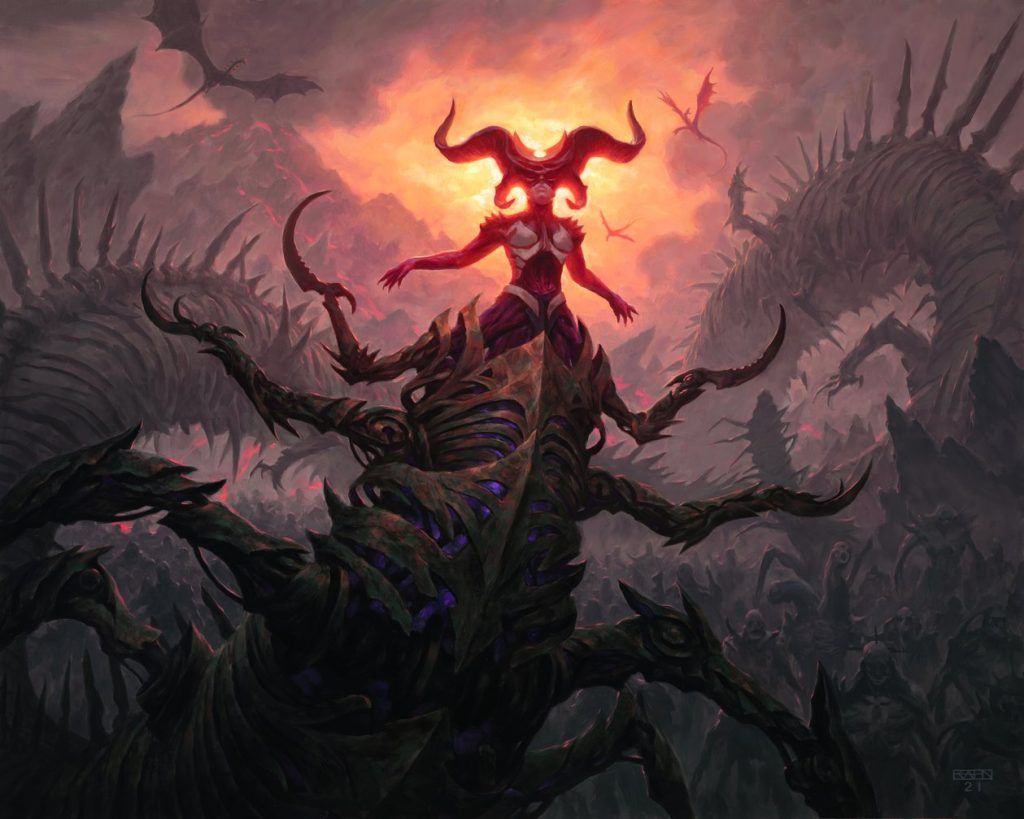
Sheoldred, the Apocalypse | Illustration by Chris Rahn
Creatures (14)
Bloodtithe Harvester x4
Kroxa, Titan of Death's Hunger x2
Bonecrusher Giant x3
Seasoned Pyromancer x3
Sheoldred, the Apocalypse x2
Enchantments (4)
Fable of the Mirror-Breaker x4
Instants (6)
Fatal Push x4
Kolaghan's Command x2
Sorceries (11)
Inquisition of Kozilek x2
Thoughtseize x3
Molten Collapse x4
Molten Impact x2
Lands (25)
Swamp x3
Mountain x3
Blood Crypt x4
Castle Locthwain
Blightstep Pathway x4
Den of the Bugbear x2
Hive of the Eye Tyrant x2
Haunted Ridge x4
Sokenzan, Crucible of Defiance
Takenuma, Abandoned Mire
Sideboard (15)
Cling to Dust x3
Eliminate x2
Unlicensed Hearse x2
Kolaghan's Command x2
Liliana of the Veil
Chandra, Torch of Defiance
Shatterstorm x4
Looking very similar to the same archetype in a number of other formats, most notably Pioneer, Rakdos midrange combines powerful individual cards like Sheoldred, the Apocalypse and Fable of the Mirror-Breaker into a deck that can both hit quick and grind out wins. While you may want to try Historic to get away from this deck, it’s still something you have to play around, if not quite the same list and not quite as omnipresent.
Other Deck Options
Aside from these, most mono color aggro decks seem to be doing well (no surprise there), but there are tons of different builds you can try in Historic.
BO1 and BO3 queues can vary a lot because you're more likely to see more aggressive and low-to-the-ground strategies in BO1, while the big three main archetypes reign over the ladder in BO3.
If you’re a player that likes to try new things, the best thing about Historic is that you can use cards from the entire cardpool instead of just Standard-legal sets, which brings plenty of new opportunities. Except for the suspended/banned lists, you can combine cards from these sets any way you want and you can probably come up with some wild play that will allow you to get at least a couple of wins.
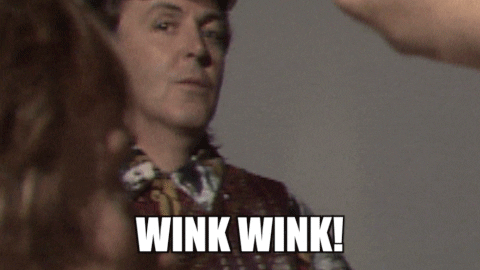
Where to Get Deck Builds
If you’re stuck, though, there’re lots of streamers trying out new builds on YouTube. CovertGoBlue and Merchant have solid decks that you can use and they also explain how they play them, so it might be a good idea to check them out to get a better grasp on Historic. There are also lots of players discussing new strategies on Reddit and posting their successful decks, so you can easily find a solid strategy lurking around there.
Draftsim has a deck database, and you can grab sample Historic lists there.
And, as always, sites like Aetherhub, MTGArenaPro, and MTGgoldfish are an awesome resource to check out other player's decks and see what's out there. Maybe get some inspiration, maybe try out something new. Take your pick!
Historic, Heading Out
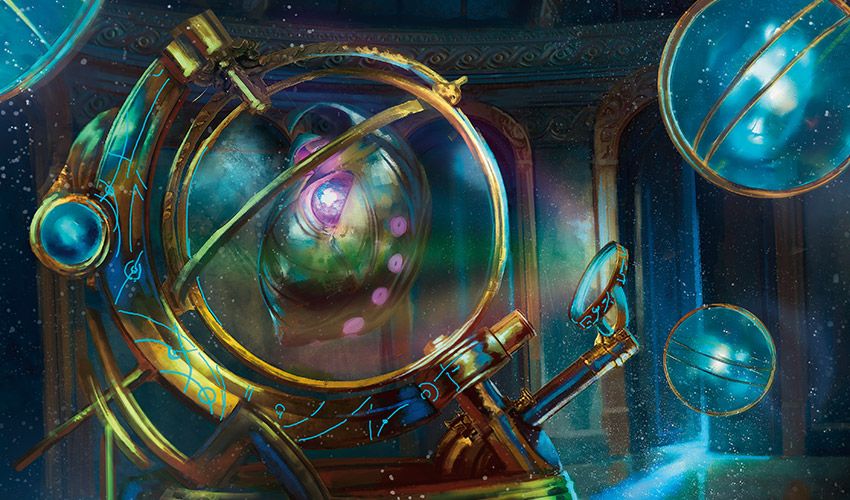
Curator's Ward | Illustration by Josu Hernaiz
WotC will always be focused on selling as much Standard product as possible. It's MTG's primary source of income, after all. They were originally pretty reluctant to give us full competitive access to Historic out of fear of players ignoring Standard entirely. It seems like their view on the matter has shifted considerably, though, considering all the Historic-exclusive content they've been pushing out.
A bit of a cycle has emerged where Historic and Explorer pick up in popularity when Standard is a bit staler, at least until Standard refreshes itself again. Having multiple formats keeps players playing through all the ups and downs, and Wizards seems to have realized this and made it work for them too. Historic boasts a variety of decks and some explosive fun for players to fulfill their daily MTG cravings. Explorer and Timeless being added to the mix also pose some interesting questions for the future of Historic.
What's your take on Historic vs. Pioneer/Explorer or Timeless? Are you looking forward to new sets paving the way for the format on MTGA, or would you prefer Wizards focused on Historic? Let us know in the comments down there or over on Draftsim's Twitter.
Thanks for your support as always, and we'll see you next time!
Follow Draftsim for awesome articles and set updates: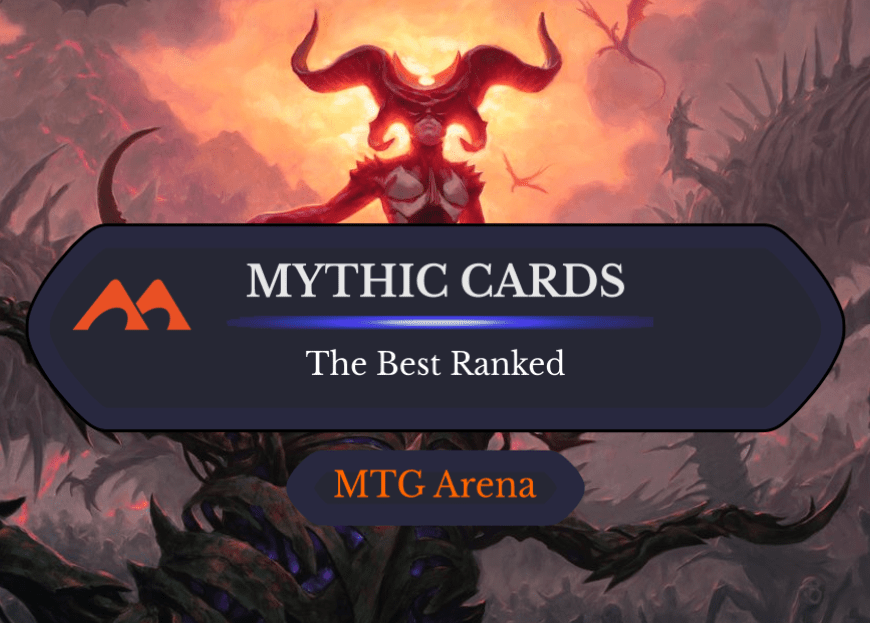
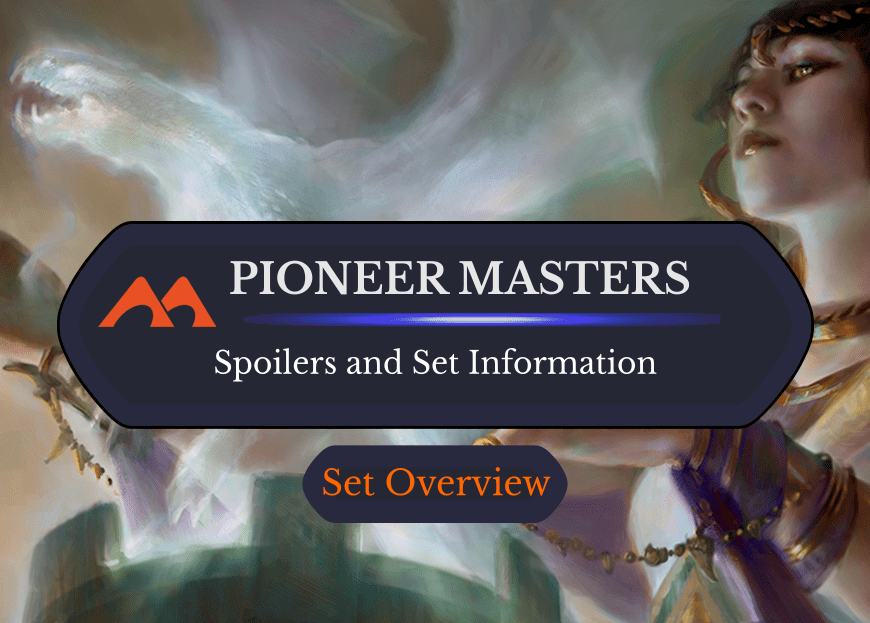
1 Comment
Historic can be a fun and non-competitive format but I think that eventually people would rather invest their time in competitive formats. So I do think that Historic would probably decline once Pioneer enters Arena. It’s quite significant that the Wizards database set & legality tab doesn’t have Historic.
Add Comment